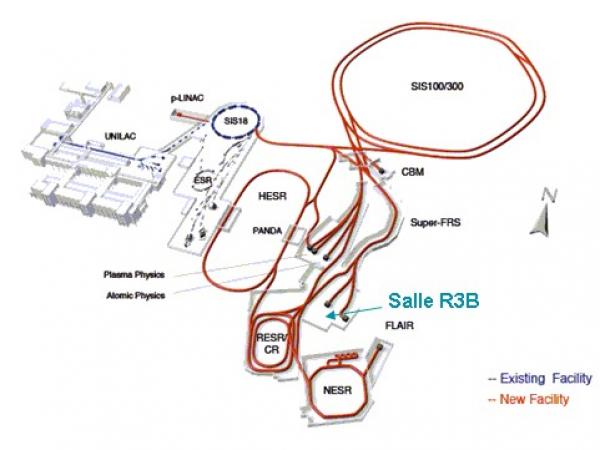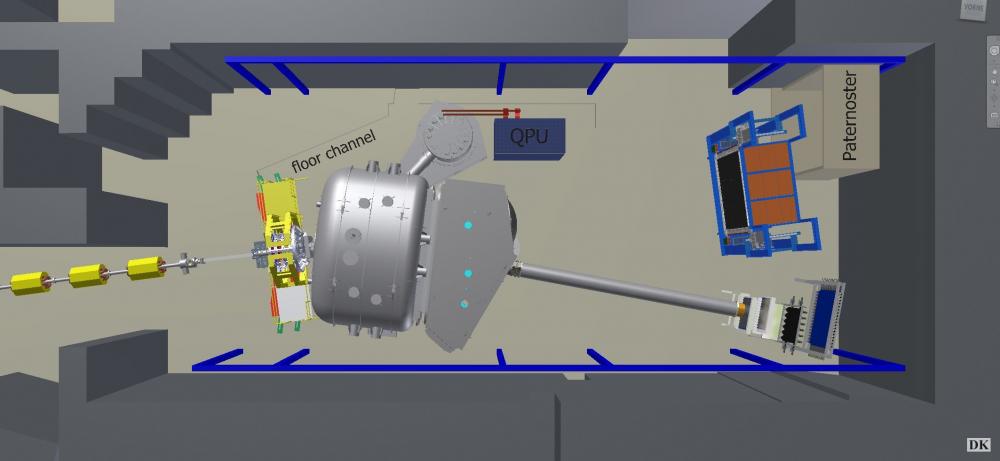Goals of the experiment
A major research focus of the LENA group at DPhN is the structure of exotic nuclei and, since more recently, the study of short-range correlations (SRC) in exotic nuclei. The GSI accelerator and, later, FAIR, are the ideal instruments to perform these kinds of measurements.
The energy (around 1 GeV per nucleon) necessary for these reactions as well as the high intensity of the secondary beams which will be available at the future FAIR/R3B facility create the necessity to build new experimental apparatus with improved performances: a central dipole magnet placed behind the reaction target providing a higher bending power and a larger angular aperture, faster detectors providing higher resolutions in the reconstruction of the kinematics at the reaction points. The construction of FAIR has been divided into different phases. The first one, called "phase 0", started in 2018 and will allow to perform experiments with the R3B device designed for FAIR and the beams delivered by the GSI accelerator, while waiting for the completion of the FAIR accelerator system.
Context
The RIKEN and NSCL/FRIB accelerators are the main competitors of GSI/FAIR. The RIKEN radioactive beam production facility, already in operation, can deliver primary beams with energies of 350 MeV per nucleon, lower than at R3B. FRIB, the NSCL upgrade under construction, aims at energies of 300 MeV per nucleon.
Compared to SPIRAL2, one should rather talk about complementarity rather than competition. Indeed, the mechanisms for producing radioactive beams are very different between the two installations, which means that the beams available will also be different, since SPIRAL 2 will specialize in beams produced with uranium-238 fission fragments. Similarly, the energies of the SPIRAL 2 beams will be of the order of a few MeV per nucleon, compared to the hundreds of MeV of the beams that will be used at R3B.
IRFU contributions
IRFU has designed and built GLAD (GSI Large Acceptance Dipole) spectrometer, a key element of the R3B device which was delivered in 2015 and used since 2018. Moreover, the IRFU has designed and realized, in the framework of the ANR COCOTIER project, a liquid hydrogen target which was used for the first time in March 2021. This is an asset to perform experiments based on a quasifree scattering reaction, such as the study of short range correlations and several other experiments at the heart of the R3B program.
Contacts
Scientific leader of COCOTIER:
R3B-GLAD project manager: Bernard Gastineau





